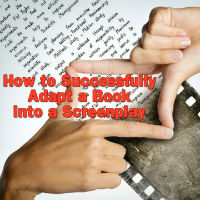One Tip for Adapting Books to Movies

Article written by Charlie Matthau
As a director, especially someone just starting out, you find yourself consider projects that run the gamut. A lot of them are adaptations of books and short stories that studios own rights to. Some are older, some are fairly new. The challenge is learning how to adapt those stories into film. As you may be well aware, what works in the books doesn’t always work in the movies.
I have firsthand experience with two adaptations. The Grass Harp, in 1995, and Freaky Deaky in 2012. Through both of those films, I learned a lot about adapting books to movies and I invite you to learn from my experience.
Make Any Changes Meaningful
Hardcore fans are going to disagree with you changing even a word of dialogue, so get the idea that you can please everyone out of your mind. What you can do instead is make every change you make a meaningful decision to add context to the story.
When we made Freaky Deaky, we changed the setting to 1974. I worked fairly closely with Elmore Leonard during this process, and the two of us agreed that the Patty Hearst kidnapping and the still relevant drug culture hanging over the 60s presented greater context to the culture he’d built in his work. It made Slater’s washed up hippie more believable, and we hoped it added subtext to the twisted love story Leonard had built.
You have to be willing to investigate your subject matter and look for ways to create a deeper world.
